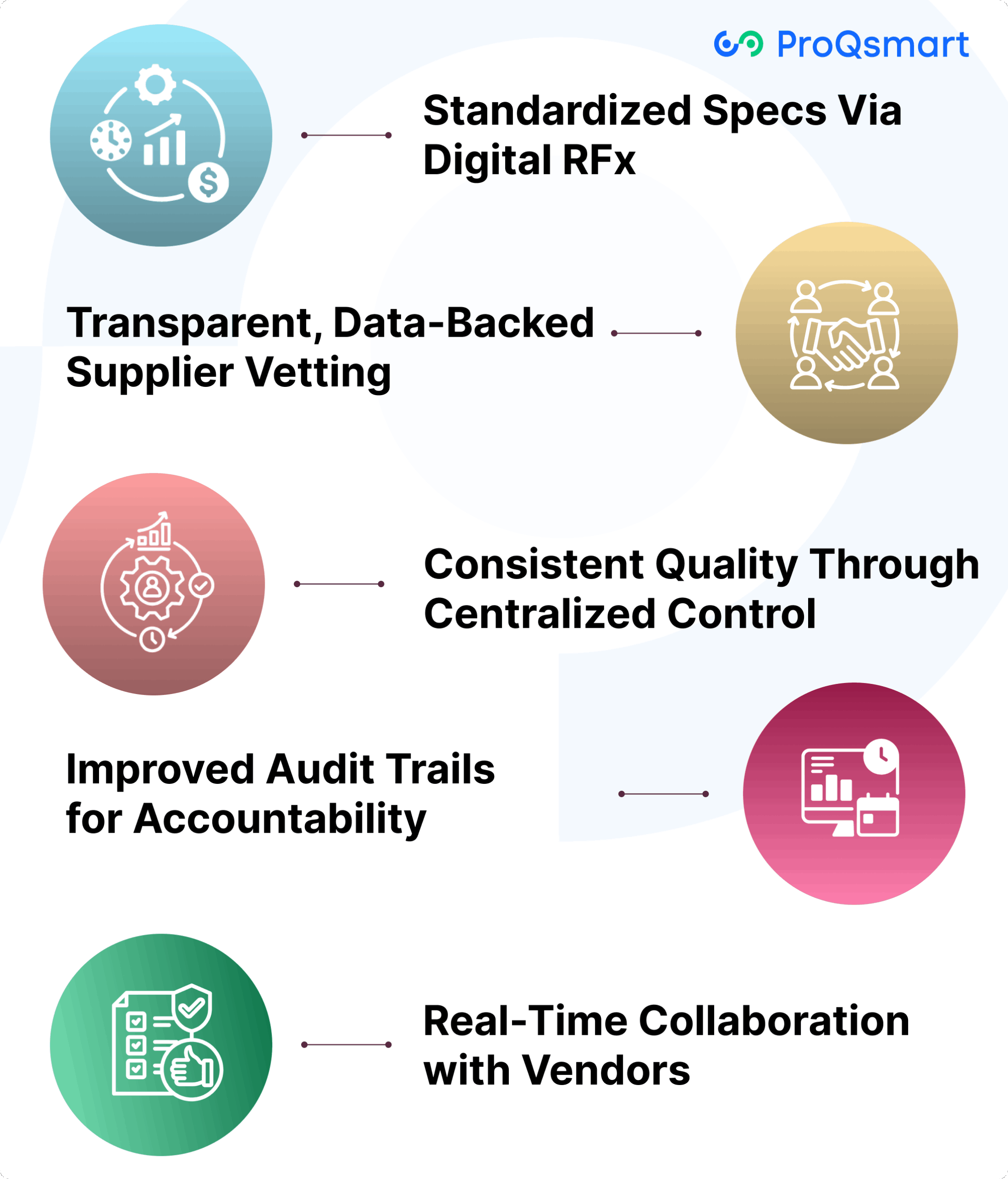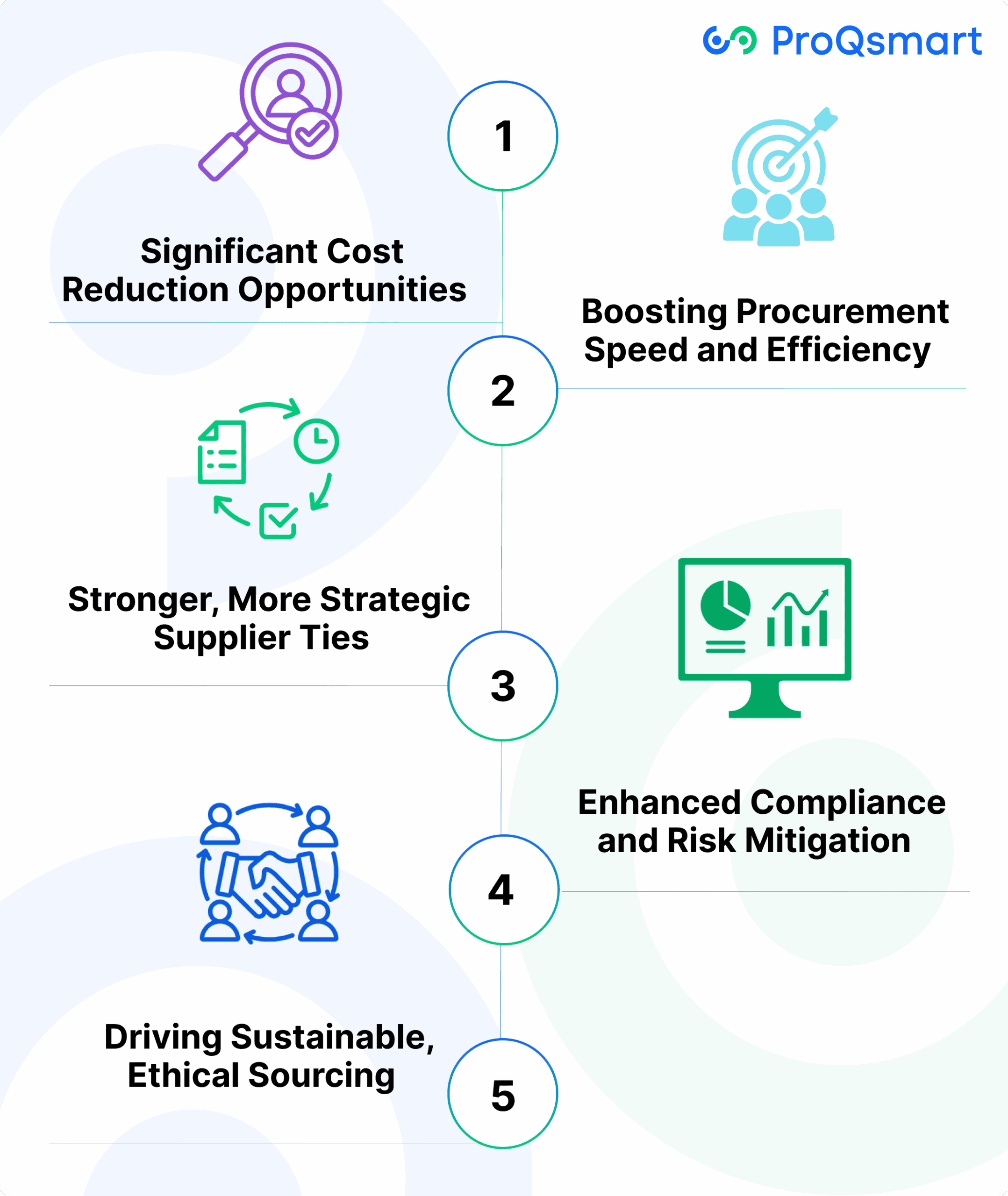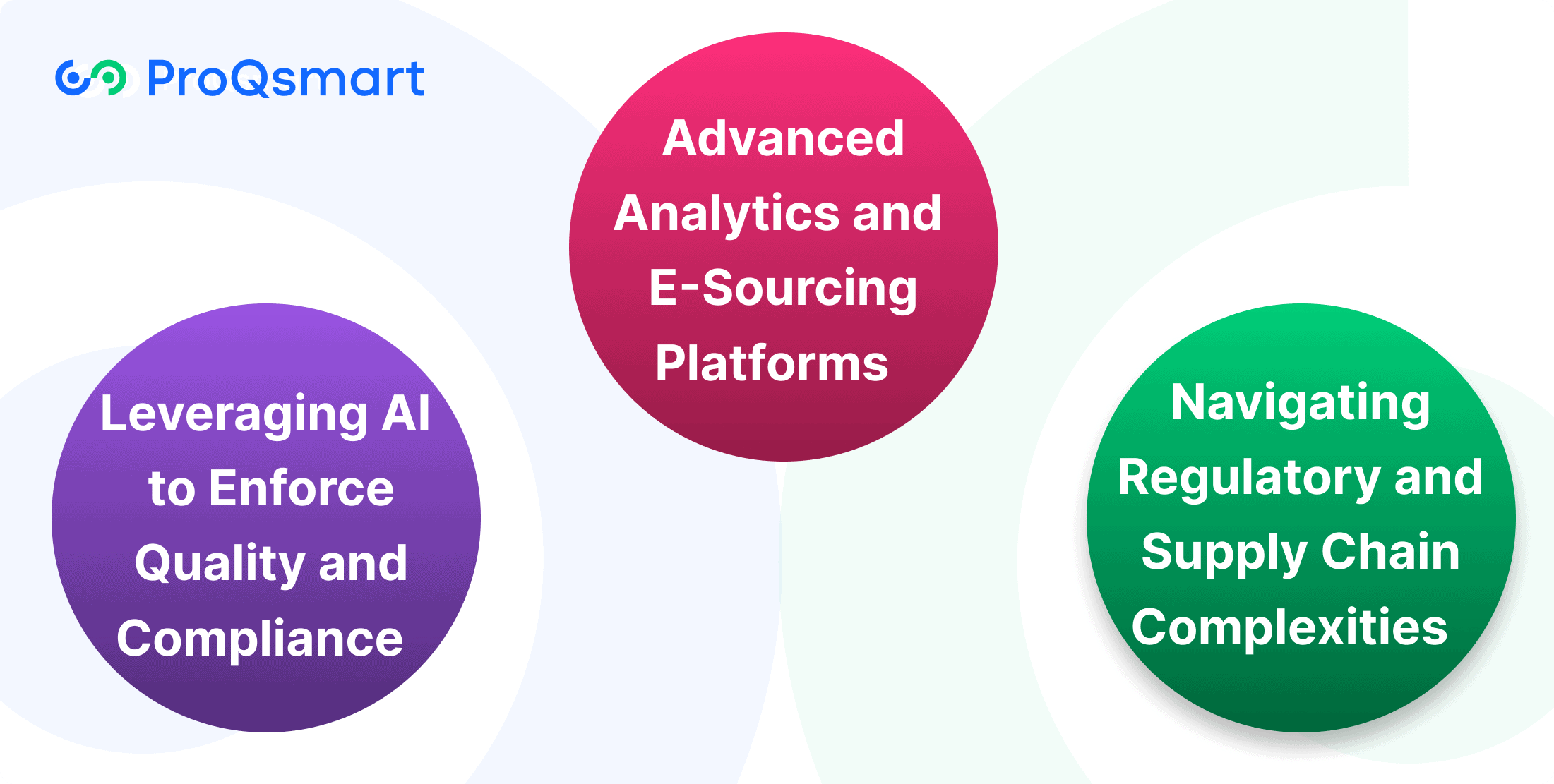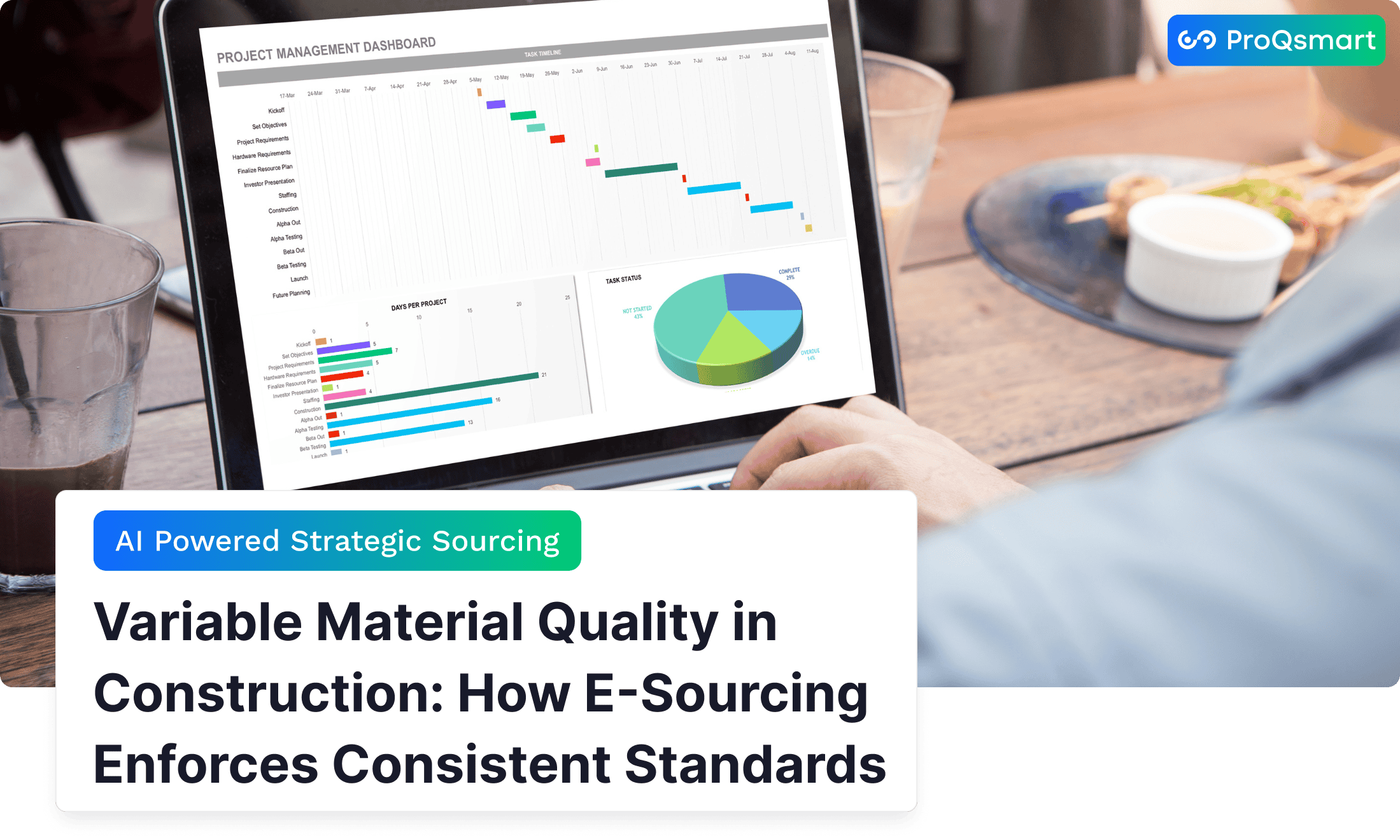Inconsistent material quality threatens construction projects. It causes costly delays, compromises safety, and leads to regulatory violations. Variations in materials weaken structural integrity. They inflate budgets and erode trust among stakeholders. Poor-quality materials can fail under stress. This results in repairs, rework, or project failures. Supply chain issues often cause these inconsistencies. Different suppliers provide materials with varying standards. Market fluctuations and lack of oversight worsen the problem. Inadequate testing fails to catch defects early. This increases risks to workers and end-users. Regulatory non-compliance can halt projects entirely. Fines and legal issues may follow. Addressing these challenges requires understanding their impact. Only then can effective solutions be applied.
The next section examines the critical impact of variable material quality on construction projects and the urgent need for effective solutions
Variable Material Quality Issues in Construction
Variable material quality plagues construction projects and undermines reliability and escalates costs. Substandard materials cause structural defects that trigger costly project delays. Safety risks increase with poor materials. Workers and end-users face hazards as regulatory violations lead to hefty penalties. Non-compliance can halt projects entirely and stakeholder confidence erodes quickly.
- Supply chain issues fuel inconsistencies
- Different suppliers deliver varying material standards.
- Lack of oversight worsens the problem.
- Inadequate testing misses defects early.
- Market fluctuations disrupt material availability.
- Cost inflation strains project budgets.
- Unreliable suppliers provide inferior products.
This jeopardizes project success. Addressing these challenges is critical. The next section explores in detail about all these issues.
The High Cost of Shoddy Materials
Quality in construction extends beyond merely meeting technical specifications; it ensures projects are durable, safe, and capable of withstanding long-term use. However, procurement professionals often face significant challenges due to the financial and operational consequences of low-quality materials. Utilizing effective esourcing tools can help mitigate these issues. Opting for shoddy materials—those that are substandard, defective, or non-compliant—may seem like a cost-saving decision in the short term. Yet, such choices lead to recurring repairs, escalating maintenance costs, and, in some cases, complete structural replacements.
Project Delays and Budget Blowouts
Compromising on material quality often leads to significant project delays, especially when using esourcing tools to vet suppliers. Inconsistent batches or delayed deliveries can halt construction, forcing teams to re-mobilize crews and extend equipment rentals beyond planned schedules. Moreover these disruptions trigger budget overruns, as companies face inflated costs for last-minute material replacements. To mitigate these risks, sourcing teams should rigorously vet suppliers and test materials for compliance with esourcing solutions.
Compromised Safety and Structural Integrity
Substandard materials present severe risks to construction workers and future building occupants. These inferior materials can lead to hazardous conditions, resulting in failed safety inspections, structural failures, or even life-threatening incidents. Beyond immediate safety concerns, the use of shoddy materials incurs substantial financial burdens, including costly repairs, legal liabilities from lawsuits, and stringent regulatory fines. To protect public safety and uphold contractor accountability, using esourcing tools for rigorous supplier vetting, comprehensive material testing, and stringent contractual quality standards is indispensable.
Reputational Damage and Legal Woes
Compromising on material quality carries consequences far beyond immediate project costs. Poorly executed projects, marked by the use of substandard materials, quickly erode a company’s reputation, impacting their overall sourcing cycle. This reputational damage can result in lost contracts, diminished client trust, and a weakened competitive edge in future bidding processes, especially in an increasingly competitive procurement sector.
How E-Sourcing Fixes Material Inconsistency

Material inconsistency often stems from vague specifications, overlooked details, or delayed revisions during the sourcing process. Tight project deadlines and stringent compliance requirements exacerbate these challenges, creating significant obstacles for manufacturers and contractors. E-sourcing offers a powerful solution by providing a streamlined, digital, and standardized procurement process. This approach enhances transparency, ensures accountability, and aligns buyers and suppliers toward shared quality objectives. By leveraging e-sourcing platforms such as ProQsmart, teams can define precise material specifications, track compliance in real time. They can also maintain a centralized record of all transactions, reducing errors and ensuring consistent material quality across projects.
1. Standardized Specs Via Digital RFx
Standardizing the setting of specs through digital RFx offers a simple solution. Buyers are able to upload specific requirements, ensuring that all suppliers are playing from the same playbook. This ensures bids are consistent and makes it easier to identify key nuances that matter.
With digital RFx, there will be:
-
Reduced errors in specs and reduced back-and-forth with suppliers to clarify specs
-
A single platform for managing and updating specs
-
Automatic records of every change or update to requirements
-
Better compliance from suppliers due to clear guidelines
Having specs up to date in real time ensures that all suppliers have a clear understanding of what’s required. This reduces errors and increases uniformity among orders.
2. Transparent, Data-Backed Supplier Vetting
Transparency is key when selecting the right suppliers. E-sourcing allows easy tracking of data, reviewing side-by-side comparison records, and exploring deeper into performance metrics. With data-backed vetting, suppliers are evaluated based on facts, not assumptions. As each transaction is recorded, buyers can track past performance and ensure quality is always on course.
3. Consistent Quality Through Centralized Control
With one e-sourcing system such as ProQsmart, teams are able to compare and ensure quality is checked the same way each time. When all parties operate from the same playbook, selections are made from unambiguous, up-to-date information. Quality assurance checks become routine, and buyers are able to identify patterns or problems before they develop into larger ones.
4. Improved Audit Trails for Accountability
E-sourcing platforms create a clear audit trail. This provides teams with an easy way to track all actions, view who did what when, and determine follow-up action in the event of a conflict. These robust audit trails foster trust throughout the supply chain and ensure accountability at all levels.
5. Real-Time Collaboration with Vendors
E-sourcing allow buyers and suppliers to exchange information in real-time. This improves the ability to resolve problems quickly, provide immediate feedback, or change orders last minute.Daily discussions translate to fewer mistakes, improved quality and overall less margin for error.
E-Sourcing: More Than Just Quality

E-sourcing stands at the core of modern supply chain management, transcending mere quality control to deliver a transformative approach to procurement. It integrates administrative efficiency, regulatory transparency, and strategic sourcing practices into a cohesive system. Construction and manufacturing firms leverage e-sourcing to optimize their procurement spend, unlock greater value, and maintain streamlined operations. This digital approach not only boosts operational efficiency but also fosters collaboration between buyers and suppliers, ensuring consistent quality and compliance while driving cost savings and project success
Significant Cost Reduction Opportunities
Competitive bidding, which e-sourcing platforms like ProQsmart have simplified, allows buyers to view real-time, side-by-side quotes from multiple suppliers. This transparent approach often forces prices lower since vendors compete to provide the most favorable terms.
When every bid is centrally stored, it becomes simple to compare different costs and terms. This arrangement allow to easily identify concealed costs or more lucrative proposals. E-sourcing allows teams to develop more specific RFQs, so buyers understand precisely what they are paying for. Stronger contracts and clearer terms result from this additional transparency.
Boosting Procurement Speed and Efficiency
Moving from paper or email to e-sourcing increases the efficiency of each step in procurement. Automation handles a lot of the heavy lifting—such as sorting bids, collecting documents, and ensuring compliance. This minimizes manual errors and streamlines processes for efficient, high-quality material procurement in construction. Tools like e-Auctions can push negotiations forward in hours, not days. For construction, quick decision making allows projects to stay on schedule and in budget.
Stronger, More Strategic Supplier Ties
Further, e-sourcing can help create a culture of trust among buyers and suppliers. Transparent documentation and competitive procurement helps identify high-quality vendors. In the long run, this creates enduring relationships with suppliers. More than just quality strategic sourcing tools reveal the suppliers that are best fit for each job.
Enhanced Compliance and Risk Mitigation
E-sourcing helps keep procurement in line with rules and ethics. They store documents and track every step, making audits simple. Risk assessment tools make it easier to check supplier backgrounds and track compliance over time. This lowers the chance of supply chain disruptions or poor-quality goods.
Driving Sustainable, Ethical Sourcing
As scrutiny over material sourcing intensifies, e-sourcing tools empower buyers to efficiently identify suppliers adhering to sustainable and ethical practices. This enhances brand reputation and foster customer trust by prioritizing environmentally responsible and socially conscious procurement. Advanced technologies provide verifiable proof of ethical sourcing, ensuring transparency and traceability throughout the supply chain.
Smart E-Sourcing Implementation Steps
Effective e-sourcing demands a strategic approach, combining deliberate technology choices with a focus on seamless integration. . Well-defined procedures enable companies to streamline supplier interactions, reduce manual tasks, and maximize value from every contract. With real-time data insights and automated workflows, e-sourcing empowers construction firms to optimize procurement efficiency, ensure consistent material quality, and drive cost-effective outcomes, positioning them for success in a competitive industry.
Choosing The Right E-Sourcing Tech
Selecting the right e-sourcing technology begins with an honest evaluation of the organization’s specific requirements. Key things to check include simple setup, good vendor support, and strong security. Look for tools with these features:
-
Customizable RFQ templates
-
Centralized vendor management
-
Real-time quote comparison
-
Online Q&A portals
-
Ability to integrate with current or future contract systems.
Scalable technology allows you to scale up without the growing pains. Intuitive dashboards and obvious workflows allow more team members to ramp up quickly and commit fewer mistakes.
Overcoming Adoption and Transition Hurdles
Transitioning to new e-sourcing platforms can encounter resistance, often due to staff reluctance to adopt change or uncertainty about unfamiliar processes. To address this, comprehensive training and consistent support are critical for successful adoption
Integrating with Existing Systems
E-sourcing is most powerful when it easily integrates with other legacy systems such as contract or order management. Syncing information between platforms ensures that all parties have the same information at all times. Seamless integration eliminates double entry and allows for quicker vendor selections.
Measuring Success with Key KPIs
|
KPI |
Description |
Objective |
Analysis Frequency |
|
Time to Award |
Duration from RFQ issuance to contract award. |
Minimize delays to ensure timely procurement. |
Quarterly review of award timelines. |
|
Number of RFQs Processed |
Total requests for quotes handled in a period. |
Increase throughput for efficient sourcing. |
Quarterly analysis of RFQ volume. |
|
Vendor Response Rate |
Percentage of vendors responding to RFQs. |
Maximize engagement for competitive bidding. |
Quarterly evaluation of response rates. |
|
User Satisfaction |
Feedback on procurement process from stakeholders. |
Improve user experience and process efficiency. |
Quarterly survey and outcome analysis. |
The Future: AI and E-Sourcing for Consistent Material Quality

Addressing variable material quality is a persistent challenge in construction procurement, with inconsistencies often leading to costly defects, project delays, and increased safety risks. As the industry adapts to new demands and disruptions, digital procurement—particularly e-sourcing—has become a vital tool for ensuring reliable and consistent material standards.
Leveraging AI to Enforce Quality and Compliance
Artificial intelligence is revolutionizing procurement processes by enabling more rigorous supplier evaluation and selection. AI-driven algorithms can analyze extensive supplier data, including historical performance, quality certifications, and compliance records. This comprehensive analysis allows procurement teams to identify and prioritize suppliers who consistently meet stringent quality requirements, reducing the likelihood of receiving substandard materials.
Machine learning further enhances this process by continuously refining sourcing strategies based on real-world outcomes. Over time, these systems learn from past procurement cycles, helping organizations to proactively select suppliers who demonstrate reliability and adherence to quality benchmarks.
Advanced Analytics and E-Sourcing Platforms
Advanced analytics play a crucial role in monitoring and maintaining material standards. By aggregating and analyzing data from multiple sources—such as supplier performance metrics, test results, and delivery records—predictive models can flag potential quality issues before they escalate. E-sourcing platforms like ProQsmart integrate these analytics capabilities, providing procurement teams with real-time insights into supplier reliability, compliance, and material performance. This empowers organizations to make data-driven decisions, address performance gaps proactively, and ensure that only high-quality materials are sourced for construction projects.
Navigating Regulatory and Supply Chain Complexities
The construction sector is subject to evolving regulations and complex supply chain dynamics, making compliance a critical concern. E-sourcing solutions streamline compliance management by automating regulatory checks and tracking supplier adherence to industry standards. These systems provide real-time updates on regulatory changes and monitor supplier performance, reducing the risk of non-compliance and project interruptions.
By integrating AI and advanced analytics within e-sourcing platforms, construction firms can maintain high standards of material quality, improve traceability, and respond swiftly to regulatory or supply chain disruptions.
Conclusion
E-sourcing has emerged as a transformative solution for procurement in the construction industry, offering greater agility, efficiency, and confidence in supplier selection. By leveraging e-sourcing platforms, procurement teams can ensure consistent material quality, minimize risks associated with substandard suppliers, and maintain rigorous standards across every project. Enhanced traceability enables organizations to monitor each component throughout the supply chain, supporting transparency and accountability—key differentiators in a highly competitive market.
The integration of AI-driven tools further elevates the e-sourcing process, enabling faster, smarter decision-making and more effective risk management. As the construction sector continues to evolve, adopting these advanced procurement technologies is essential for maintaining a competitive edge and achieving operational excellence.To discover how ProQsmart’s e-sourcing solutions can help your team achieve these goals, schedule a demo and take the next step toward procurement success.




